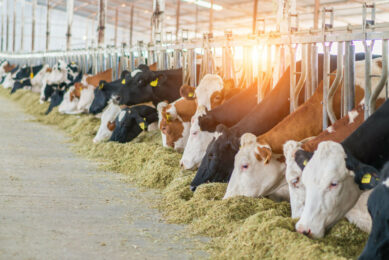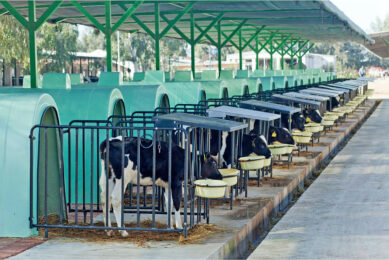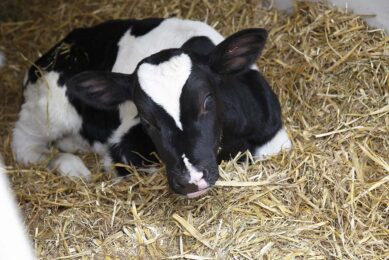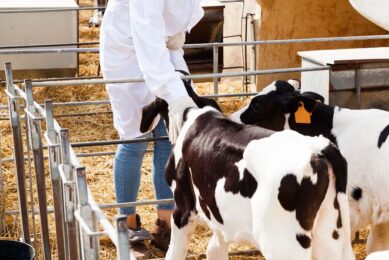Keeping calf pneumonia at bay
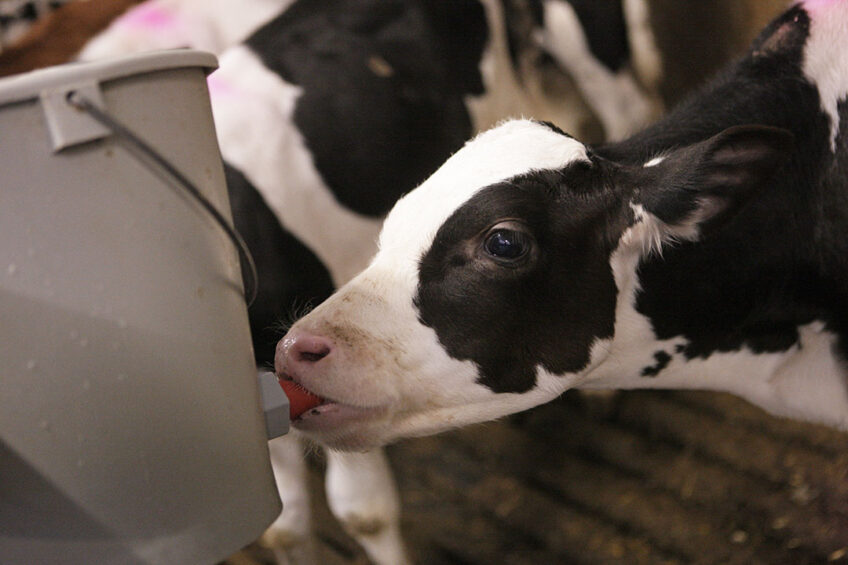
It is well-known that calves are susceptible to pneumonia and it is a significant disease that can be costly for any dairy farm. But which factors can keep pneumonia at bay?
At a recent webinar, Calf Pneumonia: Prevention is less costly than cure, which was held by the Agriculture and Horticulture Board (AHDB), Michael Overton, global dairy platform lead in precision livestock farming at Zoetis, gave some tips and advice on ways to prevent pneumonia.
Calves are vulnerable and immunity is a significant factor when dealing with youngstock. Many of the calf health issues that are of major concern can be prevented with better management of colostrum, nutrition, and weaning, to name a few. Overton stated during the webinar that one of the consequences of improper calf feeding and management is respiratory disease (BRB or pneumonia), in which a decrease in feed intake can be seen along with costly treatments. Also in the long term it could mean risk of culling, re-treatment, delay in first service and first calving. In addition to this, less milk production in the future is also an important factor to consider. During the webinar, various factors which play an important role in keeping a calf healthy from the start were explored.

The 2 big issues in calf and heifer health are calf diarrhoea, which is a hygiene and nutritional issue mostly, said Overton. And secondly, he mentioned respiratory disease, which can affect calves prior to weaning but can also impact heifers after weaning. He stressed that respiratory disease would normally follow the incidence of diarrhoea, so it is important to deal with the diarrhoea properly in the first instance.
The primary reasons mentioned as to why calves get sick (prior to weaning) include: not being fed enough colostrum (think of quality, quantity and also the timing of it being fed); high exposure to pathogens (bacteria, viruses, crypto); insufficient calories or protein; insufficient milk or milk replacer; improper environmental management (poor air quality, temperature stress).
Nutrition
Calf and heifer nutritional management affects many things and therefore a proper plan is imperative. Overton stressed that if the calf does not get enough milk early on in life it will affect her growth ability, her ability to cope with cold stress and increase the risk of the calves developing disease issues like respiratory disease or diarrhoea disease because it affects immune function and overall health. Therefore, adequate amounts of milk or milk replacer should be a focus before transitioning the animal to solid grain. The goal for the calf is to double birth weight. “We would want these animals to more than double birth weight by 60 days of age.”
 Calf health: Know what’s vital and profitable
Calf health: Know what’s vital and profitable
In a recent Agriculture and Horticulture Development Board (AHDB) webinar – Healthy calves, healthy profit – calves were the topic of the discussion.
“In addition to this, heifers need to grow properly before calving and the average daily gain should be carefully monitored. The heifers that have not grown properly will tend grow more during first lactation, and as more nutrients are used for growth, less nutrients will be available for milk production, meaning there will be a smaller lifetime production. This is because these animals were not prepared appropriately.” He added that this could equal 400 to 600 litres of milk not produced during first lactation due to inadequate size at calving and a major loss in profit potential. Therefore, it all starts with a good colostrum programme.
Colostrum
He highlighted that harvesting colostrum as quickly as possible after birth is important, saying “The quality of colostrum deteriorates with time,”, and cautions that if farmers choose to pasteurise, they should do so carefully and not exceed 60°C as this will damage the colostrum. They should feed the calf as soon as possible after birth to benefit from antibodies. The high-quality colostrum should be used for the first feeding. If there is not enough colostrum, a good quality colostrum replacement can be used, he added.
Factors which can affect colostrum quality:
- Dry cow vaccination programme
- Feed balanced dry cow ration
- Dry cow stress
- Short dry periods
- Timing of milking: Milk cows within 1 to 2 hrs of calving (max 6 hrs)
Although good colostrum is advantageous to calves and can prevent the calf from getting sick by providing immunity, Overton stresses that weaning management is also a significant aspect when it comes to transitioning from a milk diet to a non milk diet. He said that care should be taken as “poor weaning management can ‘undo’ many of the benefits of improved liquid diet management.”
 How to rear healthy youngstock?
How to rear healthy youngstock?
Hygiene is a major factor when it comes to healthy calves, but what are the main points to consider?
Sanitation and housing
Think of poor ventilation, draughts and temperature affecting calves, all of which can cause cold stress. However, nesting is also an important factor. The calf should be allowed to nest in dry and clean straw so it does not become susceptible to cold stress.
Symptoms of acute pneumonia include:
- Coughing
- Decrease in feeding
- Dropping of the head
- Higher respiratory rate
- Nasal discharge
- Raised temperature
A good sanitation programme is also advised to minimise bacteria and pathogens- it will be beneficial to the calf as well as to the farmer’s bottom line. Overton suggested a 4-step sanitation process to keep calf feeding equipment clean, he recommended:
- To rinse off dirt and milk residue – use lukewarm water, not hot.
- To wash use hot water with detergent and bleach or a chlorinated detergent, use a brush to get all residues off.
- Rinse again with a warm water acid solution.
- Drying – let the bottles and pails dry completely with acid solution. And remember not to stack on top of each other when drying.
“Many of the health issues we see are management-related,” he added, arguing that many of the issues can be tackled via proper nutrition strategies, housing management, hygiene etc. These strategies should focus on prevention rather than the treatment of these issues. “So think about “How do we prevent disease?” instead of “How do we do a better job of detecting and then treating disease?”.”
The Calf Pneumonia: Prevention is less costly than cure webinar can be seen on AHDB.



